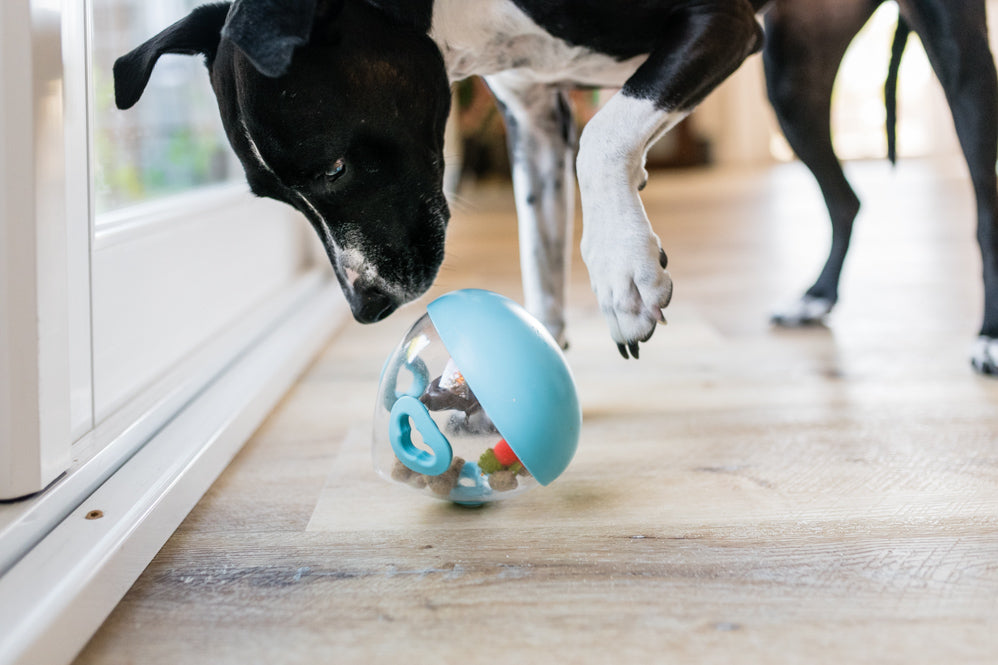News Blast: Your Daily Dose of Information
Stay updated with the latest news and insights from around the world.
Toying Around: The Secrets to Keeping Your Pet Entertained
Unleash joy for your pet! Discover fun, creative ways to keep your furry friend entertained and happy. Get the secrets now!
Creative DIY Toys for Your Pets: Fun Projects to Keep Them Entertained
Creating DIY toys for your pets can be a rewarding experience that not only entertains them but also enhances their overall well-being. From simple to complex projects, you can use materials around your home to whip up exciting toys. For instance, an old t-shirt can be transformed into a tug rope; simply braid it into strips and knot the ends to create an engaging plaything for your dog. Another fun idea is to make a puzzle feeder by taking a muffin tin and hiding treats in the cups, covering them with tennis balls. This will stimulate your pet's mind while keeping them busy!
Moreover, the creative DIY toys you craft can be personalized to suit your pet's preferences. Consider using cardboard boxes to make a mini obstacle course or a cozy hideaway. You can even get crafty with homemade catnip toys by sewing pouches from fabric scraps filled with dried catnip. The joy of creating these toys is not just in the act itself but also in watching your pet enjoy the fruits of your labor! Share your projects on social media to inspire fellow pet owners to get creative with their furry companions.

Understanding Your Pet's Play Behavior: What It Reveals About Their Needs
Understanding your pet's play behavior is essential for ensuring their emotional and physical well-being. Pets, whether cats or dogs, use play as a way to exercise, explore, and express their natural instincts. Observing the patterns in your pet's play can reveal important insights into their personality and needs. For example, a dog that engages in vigorous tug-of-war may have a higher energy requirement, while a cat that enjoys stalking and pouncing on toys might be exhibiting its predatory instincts. Recognizing these behaviors helps you tailor activities that fulfill these needs, promoting a happier and healthier pet.
Additionally, play serves as a crucial form of communication between you and your pet. Through play, pets express joy, curiosity, and even anxiety. If you notice your pet becoming easily frustrated during play or showing signs of aggression, it may be an indication of unmet needs or stress. Understanding your pet's play behavior can also lead to stronger bonds, as shared playtime fosters trust and affection. In conclusion, being attuned to your pet's play behavior not only enhances their well-being but deepens the connection you share with them.
How to Choose the Right Toys for Your Pet: A Comprehensive Guide
Choosing the right toys for your pet is essential for their physical and mental well-being. To make the best decision, consider your pet's age, size, and personality. For example, puppies might benefit from chew toys that help with teething, while older dogs may prefer plush toys that offer comfort. Additionally, active breeds tend to enjoy interactive toys that challenge them physically and mentally, such as puzzle toys or fetch toys. Safety is also paramount; ensure that the toys are made from non-toxic materials and do not have small parts that could pose a choking hazard.
Once you've assessed your pet's needs, it helps to observe their play habits. Some pets love to chew, while others prefer to chase or tug. To cater to these preferences, you can categorize toys into several types:
- Chew Toys: Durable and designed to withstand heavy chewing.
- Interactive Toys: Engaging toys that stimulate your pet’s mind.
- Fetch Toys: Items like balls or frisbees for outdoor fun.
- Comfort Toys: Soft toys that provide companionship.